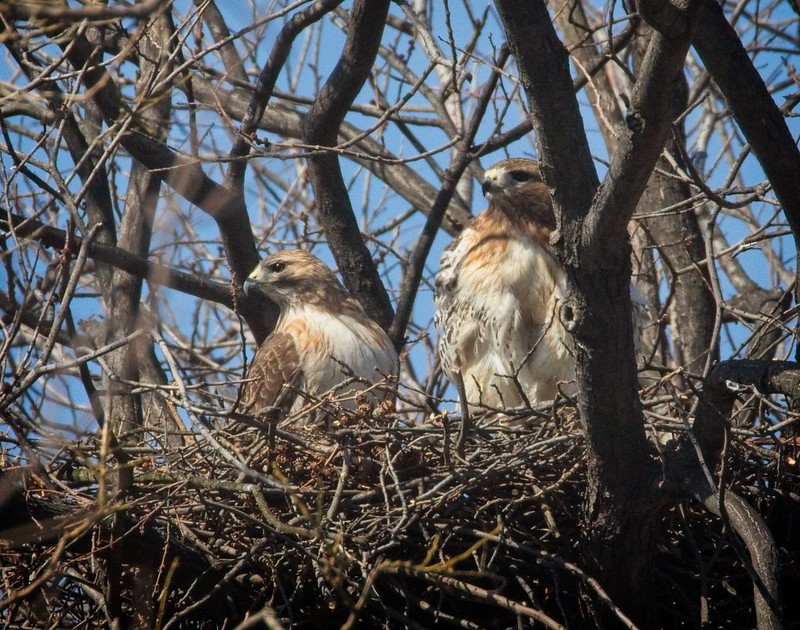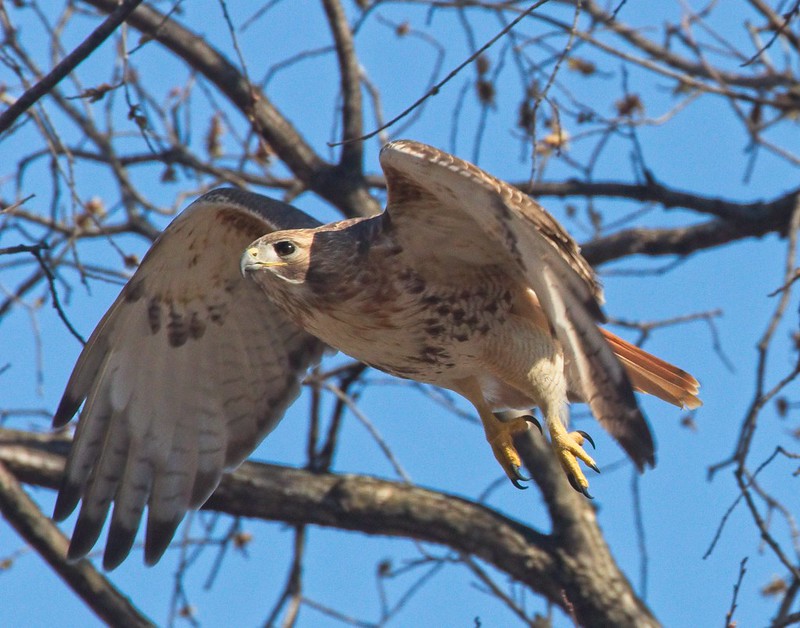First, the good news -
Red-tails, Christo and Amelia, are doing fine in Tompkins Square. They have been brooding eggs since early March and we can expect a hatch as early as later this week or next week. That said, there won't be anything for us to see as the nest is high in a tree, but we will be able to tell if something has happened by observing the behavior of the adults.
Once Christo starts bringing food to the nest, we'll know there is a chick. We won't be able to see a chick until it grows big enough to be seen over the edge of the deep nest. This could take several days. We do not know how many eggs are in the nest, so the number of chicks will have to be a surprise.
When this nest site was last used by Christo and Dora in 2017, I wasn't able to get a good look at the chick until almost a month after it hatched. As you can see in the photo below, the leaves on the tree had filled in by that time, making the nest hard to see. We will have to wait and see how visible the nest remains this season.

Tompkins Square red-tailed nestling in 2017.
While waiting for a hatch, there is always housekeeping to be done. When Christo and Amelia switch places for egg-sitting duty, the hawk returning to the nest will often bring more twigs or nesting material. In the photos below, Christo takes a piece of bark from one of his favorite Scholar trees back to the nest.




In related news, we have a sad update from our hawk neighbors over at Washington Square Park. On March 26, the adult female, who had been brooding eggs, disappeared and is presumed dead. This is heartbreaking news as this nest had previously lost the long-time male last year, and the female was beginning her first family with a new male.
The webcam, to which I'd linked in my previous post, is off-air for now, but will resume if anything changes.
I don't think anyone should give up on that nest yet as there's still a chance another female will move into the territory and could still complete a breeding season. Back in 2018, Dora was taken to rehab from Tompkins Square on April 4, and Amelia moved in and she and Christo were brooding eggs on April 20 of that year. So, I'm still holding out hope that Washington Square could have a positive outcome.
Adding to the sad news, it's an end of an era as Roger Paw, the tireless hawk-chronicler of Washington Square, has retired the blog after almost a decade. We started documenting hawks in our respective parks around the same time, so I feel I have lost a neighbor and wish her well in her new life. The site will be kept up, and I recommend reading through the archives and enjoying all the photos.
I want to leave this post on a calm note, so I recommend tuning in to my new favorite web cam, the Northern Lights in Churchill, Manitoba, Canada. You have to wait until night to see the lights, but the daytime landscape is soothing and nothing at all like NYC, so it's a nice change of scenery.
Until next time, be well and stay safe.

Christo keeping vigilant atop St Nicholas of Myra church.


























